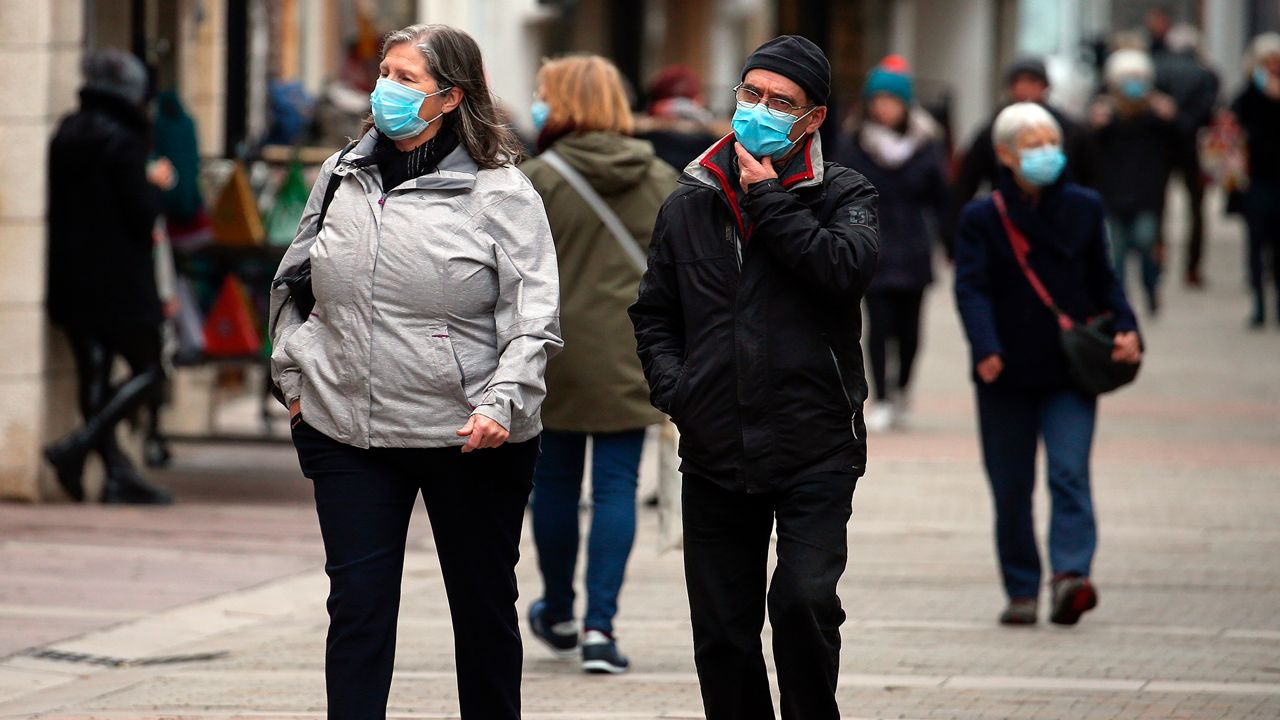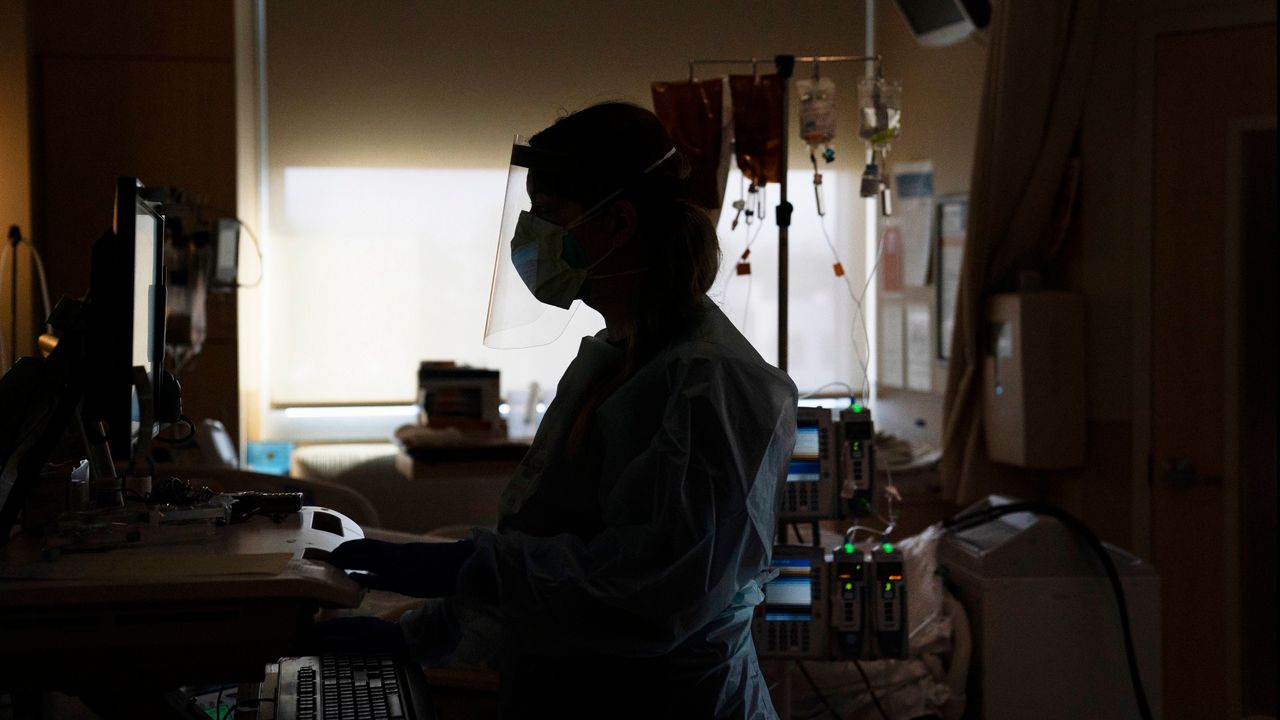MILWAUKEE — Nearly two years into the COVID-19 pandemic, the world looks a lot different than it used to. And so does the coronavirus itself.
What You Need To Know
- The World Health Organization is keeping close tabs on four "variants of concern" (alpha, beta, gamma and delta), and monitoring other "variants of interest"
- The delta variant is currently dominating in the U.S. and across the world, driving new surges
- Genetic changes in the variants may help them spread more quickly or get around the body's immune defenses more easily
- Vaccines still offer protection against the variants, and officials say getting people vaccinated is key to prevent more dangerous mutations
As it’s infected hundreds of millions of people around the globe, the SARS-CoV-2 virus has been in a state of constant change, making small tweaks to its genetic code as it goes along.
New variants have taken over from earlier forms of the virus — like the highly contagious delta variant that threw a wrench in our “new normal” this summer, and the recently identified omicron variant that has sparked new surges over the holidays.
Here, we break down what you need to know about the viral variants sweeping the world.
Variants 101
The coronavirus, like other viruses, spreads by hijacking human cells to make copies of itself. But that process isn’t always perfect: Sometimes, the copied versions of the virus have a few typos in their genetic code.
This means the coronavirus is constantly mutating as it spreads. Not all of those mutations will stick around — but sometimes, a form of the virus with a certain set of mutations starts showing up more often and gets classified as a variant.
Scientists across the world have been keeping tabs on the genetic fingerprints of the virus and tracking the variants that seem to be spreading quickly.
The World Health Organization keeps a list of some of the most important strains of the virus. “Variants of concern” are the ones getting the most attention: They’re the ones that have been shown to be more contagious, more severe or less responsive to treatments and vaccines.
“Variants of interest” are the potential up-and-comers. They have genetic changes that are linked with more dangerous characteristics, and are spreading enough to suggest an “emerging risk to global public health,” the WHO explains.
As of May, the WHO decided to start naming these important variants after Greek letters — which is why you’re hearing names like “alpha” and “delta” replacing ones like “B.1.1.7” or “the variant first discovered in India.”
Heavy hitters: The variants of concern
Alpha, formerly known as the B.1.1.7 variant, first turned up in the United Kingdom in September 2020.
The variant quickly grew to dominate cases in the U.K. and across Europe, raising alarm bells and fueling new surges in infections. By April, alpha had also become the most common strain in the U.S.
In recent months, though, the alpha variant has become less common as delta has taken over. Only a handful of new cases have been reported across the world in the past four weeks, according to GISAID data.
Studies have found that the alpha variant is much more contagious than the original virus — possibly increasing transmission by around 50%. And, according to some scientists, it’s likely also linked with a higher risk of dying.
There are a couple of reasons why the alpha variant could be more dangerous. Research suggests that the mutations on its spike protein could help it bind more closely to cells when it infects people or stick around in the body for longer — giving it more time to transmit to other people.
The available COVID-19 vaccines still proved highly effective against the alpha variant in studies.
Labs in Wisconsin have sequenced more than 3,700 samples of the alpha variant, according to the Wisconsin State Laboratory of Hygiene.
Beta, or B.1.351, was first detected in South Africa in September 2020.
The variant quickly took over in South Africa, at one point making up nearly all new cases in the country. But it’s since faded into the background, with almost no new cases showing up worldwide, according to GISAID data.
Beta was first detected in the U.S. in January. No beta variant samples have shown up in the country in recent weeks, the CDC reports.
The CDC estimates that the beta variant is around 50% more contagious than the original form of the virus. And it includes one particular change that scientists are keeping a close eye on: E484K, nicknamed the “Eek” mutation.
The “Eek” mutation affects the spike protein and appears to help the virus get around the body’s immune defenses — which could help the variant evade vaccines’ protection or reinfect people who have caught COVID-19 before.
In fact, the beta variant has proven to be a big challenge for COVID-19 vaccines and a major hitch in South Africa’s rollout.
A study found AstraZeneca’s vaccine did not protect people well against mild or moderate cases caused by the beta variant — just as South Africa was preparing to hand out a million doses of AstraZeneca.
Johnson & Johnson announced in January that the efficacy rate for its shots dropped from 72% in the U.S. to 57% in South Africa. Pfizer and Moderna reported that their mRNA-based vaccines still protected against the variant but were slightly less effective.
Some monoclonal antibody treatments are also less effective against the variant, according to the CDC.
Wisconsin has sequenced more than 70 samples of the beta variant, the State Laboratory reports.
The gamma, or P.1, variant was first reported in December 2020 in Japanese travelers who had recently returned from Brazil.
Gamma drove record-breaking surges in Brazil and spread throughout South America. The city of Manaus, Brazil — which was devastated by a first coronavirus surge in spring 2020 — became a cautionary tale, as many residents were reinfected by the new variant after already recovering from COVID-19.
Only a handful of gamma cases have shown up across the world in recent weeks, per GISAID data.
The U.S. reported its first gamma case in January in a traveler who had recently visited Brazil. At its peak in June, the variant made up around 11% of sequenced cases in the U.S., but it has not shown up in recent samples, the CDC reports.
The gamma variant shares a lot of similarities with beta — including the key “Eek” mutation. A study suggested that the variant is 1.7 to 2.4 times as transmissible as the original form of the virus.
Research so far has suggested that vaccines still offer strong protection against the gamma variant, even though they might be slightly less effective.
The State Laboratory reports that Wisconsin has sequenced over 300 samples of the gamma variant.
Delta, or B.1.671.2, took over as the most concerning variant of concern in recent months, after it was first identified in India late last year.
The variant helped add fuel to India’s devastating COVID-19 surges. And it quickly came to dominate infections across the world, at one point making up more than 90% of cases on every continent except South America, according to GISAID data.
Ater it first arrived in the U.S. in March, the delta variant saw a steep rise. In the fall, almost every new case in the country came from the delta variant, the CDC reports. But for the first time in months, delta has dropped off to a minority of U.S. cases.
Delta appears to be much more infectious than previous versions we’d seen — potentially more than twice as contagious as the original virus — and may have some ability to get around the body’s immune defenses. “It’s really like the worst of both worlds,” Yale epidemiologist Nathan Grubaugh told STAT News.
The variant has sometimes been called a “double mutant” — even though it includes more than just two mutations — because it has a pair of key differences that may make it more dangerous.
The L425R mutation may help the virus bind more closely to human cells. And the E484Q mutation, which looks a lot like the “Eek” mutation, could help it evade the immune response.
With delta dominating, infections spiked again across the U.S. and around the world. After a summer of relaxed restrictions, the WHO and the CDC encouraged vaccinated people to mask up again amid the variant’s rise.
Studies have found that Pfizer and Moderna vaccines still provide a strong level of protection against the delta variant, even though it’s a slightly lower level than against the original virus. Having both doses in the series is key, though: The efficacy rate against delta was only around 33% after one Pfizer shot, researchers found.
One preprint study found that the Johnson & Johnson shots were a lot less effective against the variant — though J&J’s own studies still reported a good level of protection.
Breakthrough cases are still rare and tend to be mild, and the delta variant is mostly spreading among unvaccinated people, health experts emphasize. But there’s concern that vaccinated people who do catch the delta variant may transmit it to others — which didn’t seem to be the case for other strains.
“The delta variant is showing every day its willingness to outsmart us and to be an opportunist in areas where we have not shown a fortified response against it,” CDC Director Rochelle Walensky said at a briefing this summer.
Wisconsin has reported more than 25,000 samples of the delta variant so far — the most of any variant by a long shot.
Now there’s a new key player joining the lineup — omicron, or B.1.1.529, is the latest variant of concern that’s been ringing alarm bells across the globe. It was first identified in Botswana and South Africa in November 2021, although sequencing has found that the variant was present in the Netherlands before those reports.
South Africa saw a steep surge in cases after the variant was detected — followed by a quick decline. And, while many countries acted quickly to limit travel, the variant rapidly popped up in other parts of the world, including the Netherlands, Australia, the U.K., Hong Kong and Canada, according to GISAID data.
The U.S. reported its first omicron case on December 1, in a patient from California who had recently traveled to South Africa. The infected person was fully vaccinated against COVID-19 but hadn't gotten a booster shot, infectious disease expert Dr. Anthony Fauci said at a briefing.
And in just a matter of weeks, omicron has taken over as the dominant version of the virus in the U.S. By December 20, the new variant was making up almost three-quarters of new cases, the CDC announced, with disease rates spiking across the country.
The WHO reports that omicron “has a large number of mutations, some of which are concerning.” The variant includes more than 30 changes to the spike protein — and a number of them look similar to earlier powerhouse variants like alpha and delta.
Omicron appears to be much more contagious than other versions of the virus: Studies have estimated that it spreads two to three times faster than delta.
And there’s some evidence that omicron may be better at getting around immune defenses. Research from Pfizer found that two doses of its vaccine may not be as effective at preventing omicron infections — though booster shots helped restore some of that protection, and the vaccines still appear effective against severe disease from omicron.
The good news is that omicron does not seem to be more deadly than other variants. In fact, several studies have found that the new variant may be linked with milder disease and lower hospitalization rates.
The rise of omicron is another reason to “redouble our efforts” to fight the pandemic, NIH director Dr. Francis Collins told CNN.
"I know, America — you're really tired of hearing those things,” Collins said. “But the virus is not tired of us. And it's shapeshifting itself."
Keeping tabs: The variants of interest
The lambda variant, or C.37, first showed up in Peru in December 2020.
It spread to a few different countries — especially in Latin America — and showed up in several U.S. states. And it shares some of the mutations that make variants of concern more dangerous.
Still, lambda hasn’t made too much of a dent: It only ever represented a very small share of cases in the U.S., and generally has spread more slowly than other variants like delta.
And the mu variant, or B.1.621, was first identified in Colombia in January 2021.
The variant spread quickly across South America and was detected in dozens of countries, including in thousands of samples in the U.S.
The WHO reports that mu has a “constellation of mutations that indicate potential properties of immune escape” — basically, that it shares some of the changes that could make it harder for the immune system to catch.
Some lab-based studies have suggested that antibodies from the vaccine are somewhat less effective against the variant. But mu hasn’t been powerful enough to draw focus from other variants, officials said.
“We’re paying attention to it, we take everything like that seriously,” Fauci said about the mu variant at a press briefing. “But we don’t consider it an immediate threat right now.”
(Those of you who know your Greek alphabet might notice there are some letters missing. Several former variants of interest — including eta, iota, kappa, epsilon, zeta and theta — were all downgraded from the WHO list, though experts are still keeping tabs on them. And a couple letters got skipped completely: Nu wasn't included because it might be confused with "new," and xi was left out because it's a common last name, the WHO explained.)
Still evolving
The rise of delta and the uptick in new COVID-19 infections are raising alarms for health experts across the country — especially as a quarter of adults in the U.S. have yet to get even their first vaccine dose.
“What we know is this variant is extremely infectious, and it will spread even more quickly than any form of COVID we have seen to date,” DHS Deputy Secretary Julie Willems Van Dijk said at a briefing this summer. “And it will spread most effectively to those who are not vaccinated.”
Officials emphasized that getting vaccinated is the best defense against the virus, even as it mutates. None of the variants so far seems to be true “escape mutants” — ones that can completely get around the vaccines’ protection — state epidemiologist Ryan Westergaard said at a briefing.
But it’s possible that a more dangerous variant could emerge as the virus keeps spreading. When it comes to the variants’ evolution, it’s “survival of the fittest,” he explained.
Stopping that process in its tracks means stopping the spread of COVID-19 infections.
“It's more important than ever to get vaccinated now to stop the chain of infection, the chain of mutations that could lead to a more dangerous variant," Walensky said at a briefing.









